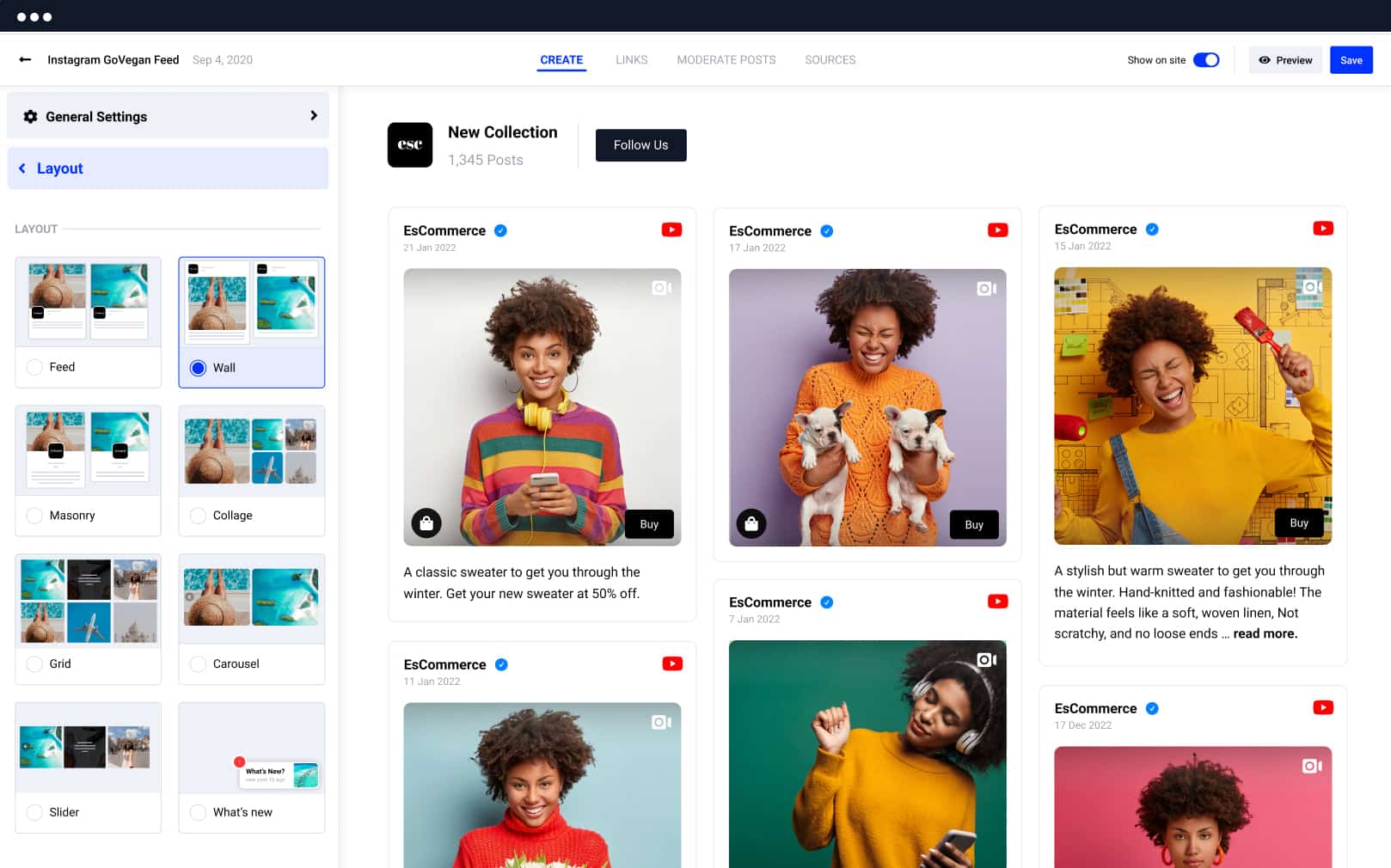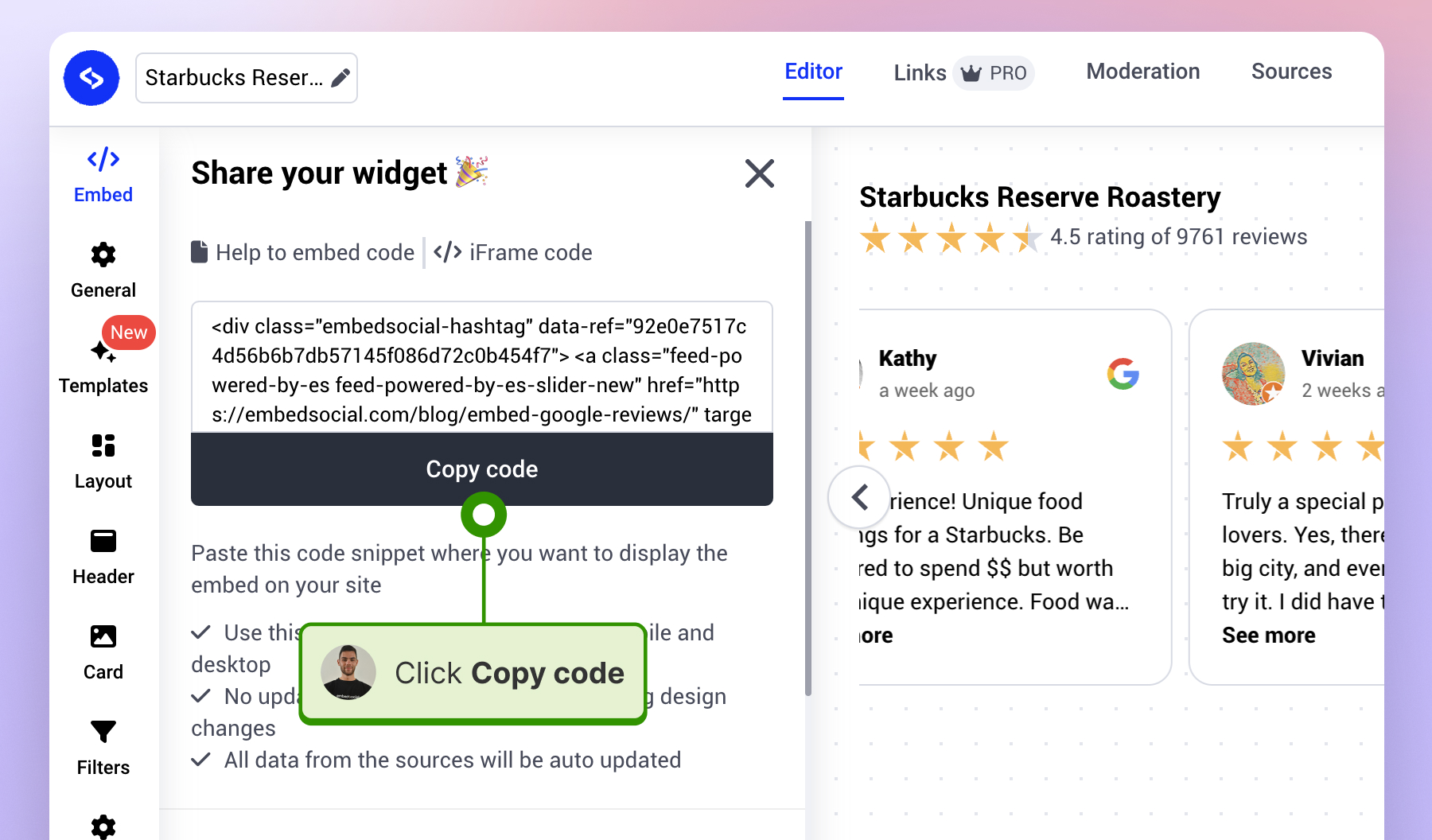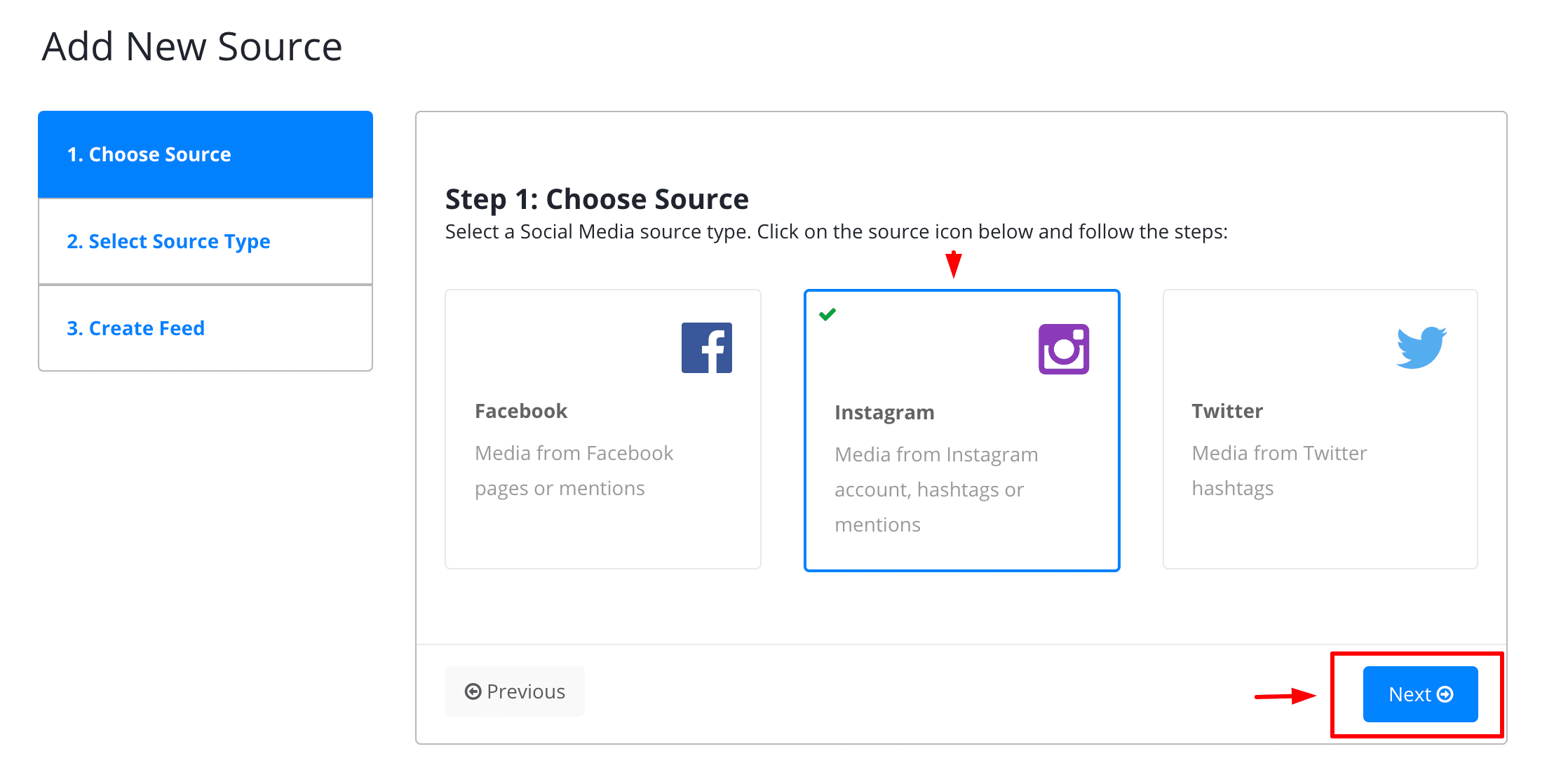Embed Social Content - Make Your Site Shine
Bringing your favorite social media moments right onto your own website can really make a difference, you know? It's like inviting all the lively chats, cool pictures, and fun videos from places like Instagram, Facebook, and YouTube to live on your digital home. This move, really, helps your site feel more alive and, well, friendly to anyone who stops by.
When people visit your website, you want them to feel a connection, don't you? Adding social posts directly there can help so much with that. It's a way to show off what your community is up to, what people are saying about you, or just share your latest happenings without making folks leave your page. This can, in a way, help more visitors stick around longer and perhaps even become new followers or customers.
Even though the idea of showing off your social content on your website sounds pretty straightforward, figuring out how to actually put it there can sometimes feel a little bit like a puzzle. There are different ways to do it, and picking the right method or helper tool can be a bit of a head-scratcher. But don't worry, we're here to talk about how you can make your website really pop with all your great social stuff, and honestly, it's simpler than you might think.
Table of Contents
- Why Bother with Embed Social?
- How Can Embed Social Help Your Website Pop?
- What Tools Make Embed Social Easy?
- Are There Older Ways to Embed Social Content?
- Getting Specific with Embed Social Platforms
- The Power of UGC When You Embed Social
- A Look at the Technical Side of Embed Social
- Thinking About Other Types of Embed
Why Bother with Embed Social?
You might be asking yourself, "Why should I go through the effort of putting my social media stuff on my website?" Well, there are some pretty good reasons, actually. When you bring your social feeds over, you're not just showing off your posts; you're also showing people that you're active and that others are connecting with you. This, in some respects, builds trust and shows that you're a real presence online. It's like having a busy, friendly storefront that people can see from the street.
Think about it: your social media pages are where a lot of your current and future customers hang out. By bringing that energy to your website, you're making your site a more interesting place to be. It can help people feel more connected to your brand or what you do, and that feeling can often lead to them wanting to buy something, sign up for your newsletter, or simply follow you on social media. It's a pretty neat way to keep the conversation going, you know, right on your own digital space.
How Can Embed Social Help Your Website Pop?
Making your website stand out is, you know, a big goal for many. When you add social content, it's like giving your site a little bit of extra sparkle. Imagine a website that just has static text and pictures versus one that has a constantly updating stream of real-time posts from Instagram or Twitter. The second one just feels more current and lively, doesn't it? It can really catch someone's eye and make them want to explore more, which is pretty much what you want.
Beyond just looking good, having live social feeds on your site helps keep your content fresh without you having to manually update your website all the time. When your social media team puts out new stuff, it just appears on your site, which is really convenient. This means your website always has something new for visitors to see, which can encourage them to come back again and again. It's a very simple way to keep things moving and interesting for your audience.
What Tools Make Embed Social Easy?
So, you're probably wondering how you actually get all this social content onto your website without becoming a computer wizard, right? Luckily, there are some really helpful tools out there that make the whole process much less complicated. These tools are pretty much designed to take the guesswork out of gathering and showing off your social posts. Choosing the right one can make a big difference in how smoothly everything works and how good it looks on your site, you know.
Sociablekit for Embed Social
One of these helpful tools is called Sociablekit. It lets you create little display boxes, or "widgets" as they're often called, that can show off content from a bunch of different places. We're talking Instagram pictures, Facebook updates, YouTube videos, and even Google reviews. You can, like, change how these widgets look to match your website's style. It's a pretty straightforward way to get that social proof right there on your pages, and it helps get people to connect with you.
Juicer for Embed Social
Then there's Juicer, which is another great option. This one is really good at pulling together all your social content from various spots and putting it into one, well, rather attractive feed. It helps you collect, arrange, and bring together everything you've posted across different social platforms. So, instead of having bits and pieces scattered, you get one smooth stream of all your best social stuff, which is quite nice for visitors to see, actually.
Flockler for Embed Social
Flockler is another tool that comes up when people talk about bringing social content onto their websites. It's particularly good for when your social media team is regularly publishing new things. This tool helps ensure that as soon as new content goes live on your social channels, it also shows up on your website. This keeps your site really current and lively, and it's a very simple way to keep your audience engaged with your latest news and updates, too it's almost effortless.
Are There Older Ways to Embed Social Content?
It's interesting to think about how things used to be done, isn't it? In the past, people sometimes used older methods to put things like videos on their websites. You might hear terms like "object" tags versus "embed" tags. Back then, "object" was generally seen as a bit more modern or preferred, while "embed" was, you know, considered a bit older. The idea was that if a browser didn't quite support the "object" method, it would still try to show whatever was placed between the "object" tags. It's a bit like having a backup plan built right into the code.
There was also a time when you could put YouTube videos on your site without using cookies just by pointing to a slightly different web address for the video. That was a pretty neat trick for privacy, actually. Things change, though, and what worked easily before might need a different approach now. So, while these older ways exist, it's usually better to go with the more current methods to make sure everything works well for everyone visiting your site, which is really what matters.
Getting Specific with Embed Social Platforms
When you're looking to bring social content onto your website, it often comes down to specific platforms. Each one has its own little quirks and ways of doing things, but the good news is that the general idea remains the same. Whether it's a quick tweet, a beautiful photo, or a longer video, there are ways to make it appear right where you want it on your site. This helps you show off the content that matters most to your audience, which is pretty important.
Twitter Feed Embed Social
If you want to show off what's happening on Twitter, you can definitely put your Twitter feed right on your website. This means that as soon as you or someone you follow posts something new on Twitter, it can appear on your site. It's a way to keep your website feeling very current and connected to the quick conversations happening online. There are instructions available that walk you through how to do this, step by step, so you can easily get your Twitter posts showing up for everyone to see.
Instagram Collage Embed Social
Instagram is all about visuals, right? So, being able to show your Instagram photos in a nice collage layout on your website is a pretty cool feature. It lets you display your best pictures in an attractive way, drawing people in with compelling visuals. You can even show off user-generated content, which is basically photos or videos that your audience has created and shared, often featuring your products or services. This is a very powerful way to show off real-world examples and get people excited about what you offer, actually.
YouTube Video Embed Social
For videos, YouTube is often the go-to. You can definitely put YouTube videos directly onto your website. There are specific settings, called "parameters," that let you control how the video player looks and acts on your site. For example, you might want a video to start playing automatically when someone visits the page. Sometimes, getting these settings just right can be a little tricky, especially with newer ways of embedding videos, but it's usually just a matter of adding a small piece of code to the video's web address. It's a simple way to share your video content without sending people away from your site.
The Power of UGC When You Embed Social
User-generated content, or UGC as it's often called, is a pretty big deal when you're talking about putting social media on your website. This is content that your customers or fans create themselves, like photos of them using your product or videos talking about their experience. When you put this kind of content on your site, it's incredibly powerful. It's not you talking about how great you are; it's real people sharing their real experiences. This, you know, builds a lot of trust.
Showing off UGC helps expand the reach of your content because it's so authentic. People tend to trust what other users say more than what a brand says about itself. So, when you feature these real posts, it can really impress your audience and show them the value you provide through the eyes of others. It's a very smart way to use the content that's already out there to help your business grow and connect with more people, which is pretty much the goal, isn't it?
A Look at the Technical Side of Embed Social
While we're mostly talking about making things easy, it's worth a quick mention that there's some technical stuff happening behind the scenes when you put social content on your website. For example, some platforms use something called the "oEmbed API" to give you the right code to put on your site. It's like a special instruction set that tells your website how to display the social post correctly. Sometimes, you might run into different versions of a YouTube link, and figuring out the best one can be a little bit of a puzzle, but there are usually simple ways to get the right code.
You might also come across different tags in website code, like <img>, <object>, or <embed>. These are different ways to tell a web browser to show something, whether it's an image, a video, or another piece of content. For something like an SVG file, which is a type of image, you'd want to pick the code that makes it appear just like a regular picture. Knowing which one to use helps ensure that whatever you're trying to show actually appears correctly for everyone, which is, you know, pretty important for a good user experience.
Thinking About Other Types of Embed
While we've been focusing on social media, the idea of "embedding" isn't just for social posts. You can actually embed all sorts of things onto your website. For instance, someone might want to put an entire other website onto their own page. Or, you might be working in a spreadsheet program like Excel and notice that a button has a special "embed formula" attached to it. This means that the button is set up to do something specific, like pull in data or run a particular action, which is quite interesting.
Even things like embedding videos without cookies, which used to be a simpler process, show how the ways we bring outside content into our own digital spaces are always changing. The core idea, though, remains the same: bringing something from one place and displaying it on another. Whether it's a lively social feed or a video that plays automatically, the goal is to make your website a richer, more interactive place for your visitors, and that, is that, something to think about.

The Best Website Widgets - EmbedSocial

Display Reviews Automatically on Your Website - EmbedSocial

Embed Instagram Account Feed - EmbedSocial